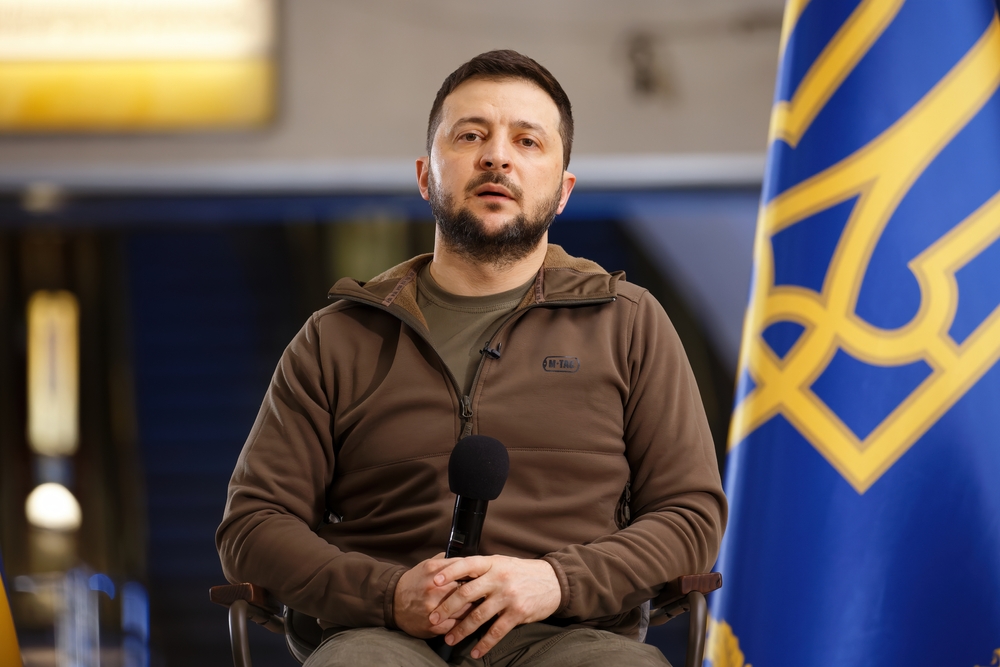In a significant development aimed at reducing tensions, Ukrainian President Volodymyr Zelenskyy announced readiness to observe a ceasefire on energy infrastructure following a U.S.-brokered deal in Riyadh. While welcoming the agreement, Zelenskyy also warned Moscow sternly, highlighting the truce’s fragile nature.
A Fragile Truce Amid Continued Strikes
In a video address on Tuesday night, President Zelenskyy declared that Ukraine would respect the terms of a ceasefire on energy facilities, saying, “A ceasefire for energy infrastructure can start today.” The agreement follows three talks in Saudi Arabia between U.S. officials and representatives from Ukraine and Russia. However, Zelenskyy warned that any attack from Moscow would result in “strong retaliation.”
Despite this progress, drone and rocket attacks have continued from both sides, showing that a broader 30-day ceasefire—agreed in principle—is yet to be fully realized. Zelenskyy expressed gratitude to Washington but acknowledged the limitations of the partial agreement and the long road ahead toward peace.
Black Sea Navigation and Kremlin Conditions
Parallel to the energy ceasefire, the U.S. also brokered a tentative agreement to secure maritime activity in the Black Sea. A White House statement confirmed that all parties had “agreed to ensure safe navigation, eliminate the use of force, and prevent the use of commercial vessels for military purposes.”
However, the Kremlin linked its cooperation to economic concessions. Russian officials said they would only commit fully if sanctions on the Russian Agricultural Bank and access to the SWIFT payment system were lifted. Zelenskyy quickly rejected the conditionality, stating, “There are absolutely clear statements that the White House has published… the Kremlin is lying about the issue of sanctions.”
Russia’s Ceasefire Claims Under Scrutiny
Kremlin spokesman Dmitry Peskov stated that President Putin’s order from March 18 to halt energy strikes for 30 days still stands and that “Russian forces are complying.” However, Ukrainian reports directly challenge this claim.
Dmytro Lytvyn, Zelenskyy’s communications adviser, posted on X that “they’ve been hitting our energy sites with bombs, attack drones, and FPV drones.” He added that there have already been “8 confirmed hits on energy facilities” since the ceasefire supposedly began and that Ukrainian air defense shoots down nearly a hundred drones every night.
Massive Drone Attack on Zelenskyy’s Hometown
Just hours after the ceasefire announcement, Kryvyi Rih—Zelenskyy’s hometown—suffered the “most massive kamikaze drone attack since the beginning of the war,” according to city administration head Oleksandr Vilkul. Though no casualties were reported, extensive damage was inflicted on civilian infrastructure, including warehouses and fire stations.
“Everyone is alive, thank God. It’s truly a miracle. The destruction is significant,” Vilkul wrote on Telegram. Other regions, including Sumy, Cherkasy, and Kirovohra,d also reported attacks, though there were no injuries at the time of reporting.
While the U.S.-brokered ceasefire on energy infrastructure and Black Sea navigation offers a glimmer of hope, violations, and conflicting narratives from both sides continue to undermine trust. President Zelenskyy noted that “manipulating, twisting agreements, and lying” remain obstacles to lasting peace. Until both nations demonstrate genuine commitment, the path to ending the war remains uncertain.



